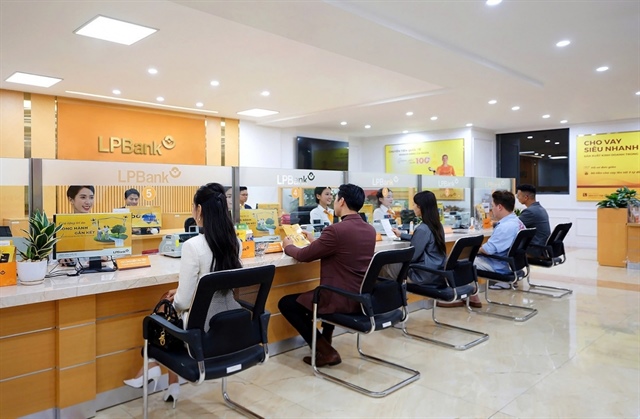SMEs turn out to be banks’ lifebuoy
SMEs turn out to be banks’ lifebuoy
Accessing bank loans had never been an easy thing for small and medium enterprises (SMEs). However, things have become quite different -- banks have been trying to persuade SMEs to borrow money.
In the past, the proposals to borrow money from SMEs were usually refused by commercial banks which saw the high risks in lending the subjects. SMEs did not have the assets to mortgage for the loans, while their finance reports were unclear enough, which raised the worries about their solvency.
But nowadays, when the big projects have been stagnant, banks have been eyeing SMEs instead. Chair of Eximbank Le Hung Dung, in a recent interview given to the local press, admitted that the bank now pays higher attention to the lending to the SMEs, which was never the bank’s focus in the past.
When Eximbank returns to lend to SMEs, the market segment has been dominated by the small and medium scaled commercial banks. An Binh Bank, for example, now has 90 percent of its clients being SMEs. In mid 2012, the bank put the SME supporting center into operation, the move which showed its determination to target small and medium clients.
A report of An Binh Bank showed that by the end of 2012, the total outstanding loans provided by the center to 300 SME clients had reached VND200 billion.
Lien Viet Post Bank has also been targeting SME clients. The bank, which has inherited the large network from one of its predecessor, has been trying to reach out to every corner in the country, offering small value loans. Of this, the loans provided to the agriculture and rural development makes up 40 percent.
There’s a common thing of both the An Binh Bank and Lien Viet Post Bank -- that they both have received the support from the International Finance Corporation (IFC), an arm of the World Bank.
In Vietnam, besides the two, some other banks namely ACB, Dong A, Eximbank, Sacombank and VIB have also cooperated with IFC. In the 2012 fiscal year, Vietnam received $1 billion worth of capital from IFC, ranking the 10th in the list of the global borrowers from IFC.
More and more commercial banks, including the big ones, have jumped into the SME market segment, showing that this is a small scaled market, but really attractive.
The institutions which provide credit to SMEs have the big advantage that they can access low cost capital from international institutions. Because of the main characteristics of the SMEs, most of the loans demanded by them are short term ones. Most of the commercial banks that lend money to SMEs are also the small banks which are also thirsty for capital regularly. Meanwhile, the big banks with profuse capital prefer lending to big projects. Therefore, international finance institutions usually have to provide loans to the activities of funding the projects relating to SMEs.
The capital is much cheaper than the market capital. The 2012 annual report of Sacombank showed that the bank borrowed VND271 billion from the Asian Development Bank (ADB), at the interest rate which was just equal to Libor rate to disburse for SMEs.
Meanwhile, in 2011-2012, the ceiling deposit interest rates in Vietnam always hovered around 14 percent per annum, while sometimes the rates reached 18 percent per annum.
The second reason that prompts banks to provide loans to SMEs, is that the ROA (return on assets) in that kind of service is higher than that of other services, according to IFC.
An Binh Bank, while declining to provide exact figures, affirmed that the SMEs’ solvency is good.
vietnamnet



























